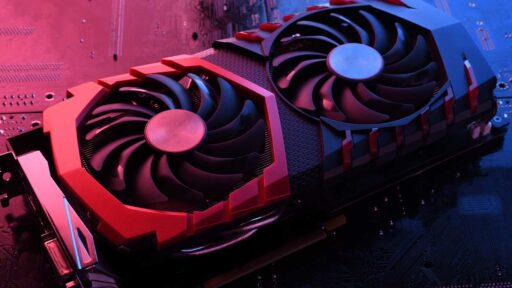As the cryptocurrency mining landscape evolves, the integration of cloud services like Amazon Web Services (AWS) has become increasingly significant. AWS offers a plethora of resources and capabilities that can significantly enhance the efficiency and scalability of crypto mining operations. This article delves into how AWS can be harnessed to optimize crypto mining, addressing the challenges of hardware limitations, cost management, and the need for scalable infrastructure. We explore strategic partnerships and innovative solutions that leverage AWS to future-proof crypto mining and create a more decentralized ecosystem.
Key Takeaways
- AWS provides a diverse selection of GPUs and managed blockchain services, boosting crypto mining performance and overcoming hardware constraints.
- Cost-effective strategies on AWS, including the use of spot instances and reserved instances, can significantly reduce the expenses associated with crypto mining.
- AWS’s scalability allows for the expansion of mining operations and the facilitation of decentralized mining networks, ensuring continuous growth.
- Strategic partnerships with companies like TRON, Avalanche, and BlockJoy leverage AWS to simplify node setup and build scalable, decentralized infrastructure.
- The future of crypto mining on AWS includes leveraging underutilized GPU resources, integrating AI and ML services, and embracing serverless architectures for efficiency.
Optimizing Crypto Mining with AWS: A Deep Dive into Efficiency

Leveraging Amazon Managed Blockchain for Enhanced Performance
The introduction of Amazon Managed Blockchain (AMB) Access and Query has revolutionized the way developers interact with public blockchains. This service simplifies the integration process, allowing for a more efficient and streamlined approach to crypto mining.
- Seamless Developer Service: AMB provides a developer-friendly environment that reduces the complexity of blockchain interactions.
- Infrastructure Simplification: With AMB, the need for extensive infrastructure setup is mitigated, leading to quicker deployment times.
- Enhanced Data Access: Developers gain easier access to blockchain data, which is crucial for effective mining operations.
The strategic use of AMB can lead to significant improvements in the performance of crypto mining activities. By reducing the barriers to entry and enhancing the accessibility of blockchain data, miners can focus on optimizing their strategies for better outcomes.
The partnership between TRON and AWS is a testament to the potential of cloud services in enhancing blockchain solutions. By simplifying the deployment of TRON Full Nodes, AWS is empowering developers with tools that are not only robust but also cost-effective.
Overcoming Hardware Limitations with AWS’s Diverse GPU Selection
The quest for powerful and cost-effective crypto mining often hits a snag due to hardware constraints. AWS offers a solution by providing a wide array of GPU options, catering to different needs and budgets. This diverse selection allows miners to bypass the common issues of limited availability and high costs associated with acquiring top-tier GPUs.
AWS’s GPU portfolio includes the latest models that are optimized for high-performance computing tasks. For instance, the recent announcement of Nvidia Blackwell GPUs being offered through cloud providers like AWS signifies a leap forward in mining capabilities. With AWS, users gain access to cutting-edge hardware like the Nvidia GB200 NVL72 without the traditional wait times or exorbitant costs.
Moreover, AWS’s infrastructure enables scalable and parallel processing, which is crucial for efficient crypto mining. By leveraging AWS, miners can orchestrate and batch-train jobs, allowing for parallelization across distributed devices. This approach not only maximizes the utilization of GPU resources but also significantly reduces the time required for mining operations.
AWS’s approach to overcoming hardware limitations is not just about providing access to GPUs; it’s about creating an ecosystem where miners can operate at peak efficiency, regardless of their scale.
Cost-Effective Strategies for Crypto Mining on AWS
Harnessing the power of AWS for crypto mining not only offers scalability and flexibility but also presents opportunities for cost optimization. By strategically selecting the right mix of services and resources, miners can significantly reduce their operational costs. AWS provides a range of instances suitable for different mining needs, allowing users to choose the most cost-effective options.
- Utilize Spot Instances: Take advantage of AWS Spot Instances for mining, which can be up to 90% cheaper than On-Demand prices.
- Reserved Instances: For long-term mining operations, Reserved Instances offer a discounted rate in exchange for a commitment.
- Scale with Demand: Dynamically scale resources up or down based on mining profitability and market conditions.
Embracing a cost-effective strategy on AWS involves not just selecting cheaper resources, but also optimizing the use of those resources to align with the fluctuating nature of crypto markets and mining difficulty levels.
Scalability in Crypto Mining: Expanding Horizons with AWS

Utilizing AWS for Large-Scale Mining Operations
The scalability of AWS infrastructure makes it an ideal platform for large-scale crypto mining operations. With AWS, miners can easily scale up their operations to meet the demands of the network and the volatility of cryptocurrency markets.
- AWS provides a range of GPU instances suitable for mining, allowing for rapid deployment and scaling.
- The use of Auto Scaling ensures that resources are efficiently matched to the mining load, optimizing costs.
- AWS’s global infrastructure offers low-latency access to mining pools and blockchain networks, crucial for timely transaction verification.
By leveraging AWS, miners can focus on optimizing their mining strategies and algorithms, rather than worrying about the underlying infrastructure.
Efficiency Unleashed: Power Strategies for Optimal Crypto Mining emphasizes the importance of energy efficiency for sustainable and cost-effective mining. Calculating profitability and costs, including electricity, hardware, pool fees, and transaction fees, is crucial. Consider cryptocurrency price volatility and use tools like CoinSmart’s calculator for accurate profit estimates.
The Role of AWS in Facilitating Decentralized Mining Networks
Amazon Web Services (AWS) plays a pivotal role in the evolution of decentralized mining networks by offering robust infrastructure and scalable solutions. AWS’s global presence and advanced cloud services enable miners to establish and expand their operations with ease.
Decentralization in crypto mining addresses regulatory challenges by providing resilience, privacy, and global participation. Sustainable practices like solar power enhance efficiency and environmental impact.
- AWS provides a variety of services that support the deployment and management of decentralized mining networks.
- The integration with AWS allows for the aggregation of underutilized GPU resources, optimizing cost and performance.
- AWS’s Amazon Managed Blockchain simplifies the setup and management of blockchain nodes, contributing to a more accessible mining ecosystem.
By leveraging AWS, miners can focus on optimizing their mining strategies and algorithms, while AWS handles the complexities of infrastructure and scalability.
Integrating with AWS Services for Continuous Mining Expansion
The integration of AWS services into crypto mining operations marks a significant leap towards continuous expansion and scalability. AWS’s suite of services offers miners the flexibility to scale their operations on-demand, ensuring that they can grow their mining power as needed without the constraints of physical hardware.
- Elastic Compute Cloud (EC2) provides customizable computing capacity.
- Simple Storage Service (S3) offers scalable storage solutions.
- Lambda allows for running code without managing servers.
- Auto Scaling monitors applications and adjusts capacity to maintain steady performance.
AWS’s on-demand resources, as highlighted in the Bitensor Mining operation guide on Medium, allow for rapid adjustments in computing power and storage, catering to the fluctuating demands of crypto mining. This adaptability is crucial for miners who need to respond quickly to changes in cryptocurrency value and network difficulty.
By leveraging AWS, miners can focus on optimizing their mining strategies and algorithms, rather than being bogged down by the complexities of infrastructure management. The result is a more efficient and resilient mining operation that can withstand the volatile nature of the cryptocurrency market.
Innovative AWS Solutions for Crypto Mining Challenges

Addressing Limited Availability and High Costs of GPUs
The quest for efficient crypto mining is often hampered by the limited availability and high costs of GPUs, which are essential for processing complex algorithms. AWS addresses these challenges by offering a range of GPU instances that cater to different mining needs, balancing performance with cost.
AWS’s pricing strategies provide substantial discounts for long-term GPU reservations, which can lead to significant savings. For instance, committing to a 1-3 year reservation can result in savings ranging from 30-65%, making it an attractive option for miners who plan to operate over an extended period.
AWS’s approach not only ensures a more stable mining operation but also mitigates the financial risks associated with volatile GPU pricing.
Moreover, the introduction of services like io.net, which aggregates underutilized GPU resources, presents a decentralized alternative. This innovative solution offers on-demand computing power that is accessible, customizable, and cost-efficient, addressing the core issues of availability and expense.
Harnessing AWS AI and ML Services for Predictive Mining Analytics
The integration of AWS AI and ML services is revolutionizing the field of crypto mining. By leveraging machine learning models, miners can automate MLOps and utilize a suite of AWS AI services to enhance their operations. These advancements lead to more efficient energy consumption and improved security measures, which are critical for the sustainability and profitability of mining activities.
AWS’s AI and ML capabilities allow for the prediction of market trends and the optimization of mining efforts. For instance, services like Amazon SageMaker enable miners to build, train, and deploy ML models quickly and efficiently. This predictive power is not just a luxury but a necessity in the volatile world of cryptocurrency.
The ability to anticipate and adapt to market changes swiftly can mean the difference between profit and loss. AWS provides the tools to make these critical predictions with greater accuracy.
The challenges of accessing distributed computing resources due to high demand from AI/ML companies are well-known. AWS addresses these challenges by offering scalable and flexible resources that can meet the needs of even the most demanding mining operations. Here’s a glimpse of the AWS ecosystem’s offerings that cater to predictive analytics in crypto mining:
Implementing Distributed Serverless Architectures for Mining
The advent of distributed serverless architectures on AWS has revolutionized the way crypto mining can be approached. By leveraging serverless computing, miners can now deploy and manage their mining operations without the need for maintaining physical servers, leading to significant cost savings and operational efficiency.
The serverless model allows for a dynamic allocation of resources, ensuring that miners only pay for the compute time they actually use. This is particularly beneficial for crypto mining, where the demand for computational power can fluctuate widely.
AWS’s suite of tools and services, including the AWS Key Management Service, streamlines the process of setting up secure and scalable mining operations. For instance, securely generating Ethereum validator keys can be achieved at a low cost using a serverless architecture, as highlighted in a recent AWS Database Blog post.
The following list outlines the core functions that io.net’s serverless offering supports, purpose-built for AI/ML workloads:
- Preprocessing
- Distributed training
- Hyperparameter tuning
- Reinforcement learning
- Model serving
By integrating these functions, crypto miners can optimize their operations, ensuring that they are not only efficient but also adaptable to the ever-changing landscape of the crypto market.
Strategic Partnerships: AWS’s Role in Advancing Crypto Mining

Collaboration between TRON and AWS for Node Setup Simplification
The strategic partnership between TRON and AWS marks a significant milestone in the blockchain space. TRON’s integration with AWS simplifies the deployment of full nodes, making it more accessible for developers to engage with the TRON network. This collaboration leverages AWS’s robust infrastructure to enhance the performance and reliability of TRON’s decentralized applications (DApps).
- High Scalability: TRON’s architecture is designed to support rapid growth and scaling of DApps.
- Cost-effective Transactions: Low transaction fees on the TRON platform benefit both developers and users.
- Smart Contract Support: Advanced smart contracts can be executed, broadening the possibilities for DApps.
- Decentralized Governance: Ensures community participation in decision-making, fostering inclusivity and transparency.
- Interoperability: TRON’s protocol supports seamless communication with other blockchains.
The ease of setting up TRON nodes on AWS not only accelerates the development process but also opens up new avenues for innovation in decentralized finance. The combined strengths of TRON’s blockchain technology and AWS’s cloud services create a powerful ecosystem for developers to build upon.
Avalanche and AWS: Pioneering Scalable Blockchain Infrastructure
The collaboration between Avalanche and AWS marks a significant milestone in the evolution of scalable blockchain solutions. Avalanche’s deployment of new infrastructure features on AWS is a game-changer, providing enterprises with advanced validator tools tailored for compliance use cases. This partnership is not just about leveraging AWS’s robust cloud infrastructure; it’s about creating an ecosystem that is both scalable and compliant with the evolving regulatory landscape.
The synergy between Avalanche’s innovative protocol and AWS’s cloud capabilities paves the way for a new era of enterprise-grade blockchain applications.
Avalanche’s integration with AWS includes several key components:
- Validator tools for enterprise compliance
- Enhanced infrastructure features for robust blockchain operations
- Seamless integration with AWS services for improved performance and reliability
This strategic alliance is poised to deliver a comprehensive suite of tools and services that will empower developers and businesses to build and manage blockchain applications with unprecedented ease and efficiency.
BlockJoy: Building the Web3 Version of AWS for Decentralized Mining
BlockJoy emerges as a pivotal player in the decentralized mining space, aiming to replicate the cloud-like experience of AWS within the Web3 ecosystem. The startup is poised to significantly reduce operating costs for enterprises by up to 80 percent, offering a nodes-as-a-service model that is both efficient and cost-effective.
BlockJoy’s innovative approach to decentralized infrastructure is not just about cost savings; it’s about creating a seamless and scalable environment for blockchain operations.
The implications of such a service are vast, with potential benefits including:
- Simplified node management and deployment
- Enhanced security and uptime through distributed architecture
- Streamlined access to blockchain networks for developers and enterprises
BlockJoy’s commitment to building a Web3 version of AWS is a testament to the growing need for specialized services that cater to the unique demands of decentralized mining. As the industry evolves, such platforms will be instrumental in supporting the expansion and adoption of blockchain technology.
Future-Proofing Crypto Mining: AWS’s Vision for a Decentralized Ecosystem

The Impact of Amazon Managed Blockchain Access and Query
The introduction of Amazon Managed Blockchain (AMB) Access and Query has marked a significant milestone in the realm of crypto mining. This service simplifies the interaction with public blockchains, offering developers a streamlined approach to accessing essential blockchain infrastructure and data components.
- Ease of Access: Developers can now seamlessly connect to blockchain networks without the complexity of managing nodes and infrastructure.
- Data Retrieval: AMB provides efficient mechanisms for querying blockchain data, enabling real-time analytics and decision-making.
- Operational Streamlining: The operational aspects of blockchain management are significantly streamlined, reducing the overhead for crypto miners.
The strategic advantage provided by AMB Access and Query lies in its ability to offer a robust and scalable foundation for crypto mining operations, ensuring that miners can focus on optimizing their mining strategies rather than grappling with infrastructure challenges.
io.net’s Approach to Aggregating Underutilized GPU Resources
io.net has pioneered a novel approach to maximizing the utility of GPU resources by creating a Decentralized Physical Infrastructure Network (DePIN). This network harnesses the collective power of underutilized GPUs from various sources, including independent data centers and hardware networks. The result is a robust, on-demand computing platform that is both cost-efficient and easily integrated into existing workflows.
The platform’s capabilities extend to a range of tasks, from preprocessing and distributed training to hyperparameter tuning and model serving. It is particularly adept at handling AI/ML workloads, offering a seamless experience for engineers who require extensive computational resources.
io.net’s system is not just a technical marvel; it’s a strategic asset that empowers teams to scale their computational workloads effortlessly, ensuring that projects can grow without being hindered by hardware constraints.
io.net’s offering is structured around four core functions:
- Parallel Training
- Parallel Hyperparameter Tuning
- Reinforcement Learning
- Model Serving
These functions are designed to overcome common bottlenecks such as CPU/GPU memory limitations and sequential processing, enabling distributed computing across a vast network of GPUs. As the digital landscape evolves, io.net’s innovative infrastructure is set to play a pivotal role in shaping the future of connectivity and computational power.
Envisioning a Scalable and Efficient Blockchain Infrastructure with AWS
The future of crypto mining hinges on the ability to scale and maintain efficiency in the face of growing demands. AWS is at the forefront of this transformation, offering tools and services that enable miners to build and manage scalable blockchain infrastructures. With the introduction of Amazon Managed Blockchain (AMB) Access and Query, AWS simplifies the interaction with public blockchains, streamlining the process of accessing blockchain infrastructure and data components.
AWS’s vision extends beyond current capabilities, aiming to provide a decentralized ecosystem that is both robust and adaptable. This ecosystem is designed to support the continuous growth of the blockchain industry, ensuring that scalability and efficiency are not compromised.
AWS’s comprehensive suite of services, including EC2 and RDS, empowers developers to innovate and build upon the Ethereum blockchain, as seen with Scroll’s zkevm 2 solution. This approach not only accelerates adoption but also incentivizes further development within the blockchain space. As AWS continues to evolve, it remains a pivotal player in shaping the future of decentralized infrastructures.
Conclusion
In summary, harnessing AWS for crypto mining presents a transformative opportunity for efficiency and scalability in the blockchain space. The integration of AWS’s robust infrastructure with the dynamic needs of crypto mining operations allows for unparalleled computational power and flexibility. As we’ve explored, solutions like Amazon Managed Blockchain (AMB) and partnerships with organizations like TRON and Avalanche are paving the way for seamless blockchain interactions and full node setups. Moreover, the advent of decentralized physical infrastructure networks (DePIN) and platforms like io.net are addressing the challenges of limited GPU availability and high costs, offering customizable, cost-efficient, and easily implemented computing resources. The synergy between AWS and crypto mining is not just a technical enhancement; it’s a strategic evolution that empowers developers, miners, and enterprises alike to unlock the full potential of decentralized technologies.
Frequently Asked Questions
How does Amazon Managed Blockchain enhance crypto mining performance?
Amazon Managed Blockchain (AMB) provides a managed service that simplifies the creation and management of scalable blockchain networks. It offers developers new services for seamless interaction with public blockchains, which can lead to more efficient access to blockchain infrastructure and data components, enhancing overall crypto mining performance.
What are the benefits of using AWS’s GPU selection for crypto mining?
AWS offers a diverse selection of GPU instances that can overcome hardware limitations by providing scalable, high-performance computing power for crypto mining. This allows miners to choose the most cost-effective and suitable GPUs for their operations without worrying about hardware availability or maintenance.
How does io.net utilize underutilized GPU resources for crypto mining?
io.net aggregates GPUs from underutilized sources such as independent data centers and hardware networks, combining them within a Decentralized Physical Infrastructure Network (DePIN). This provides on-demand computing power that is accessible, customizable, cost-efficient, and easy to implement for crypto mining.
What is the significance of the partnership between TRON and AWS?
The partnership between TRON DAO and AWS simplifies the deployment of TRON Full Nodes by leveraging AWS services. This enables developers to set up blockchain nodes more efficiently and empowers them with enhanced blockchain solutions, contributing to the growth of decentralized mining networks.
How does Avalanche’s collaboration with AWS impact blockchain infrastructure?
Avalanche’s collaboration with AWS brings scalable blockchain solutions to enterprises by launching new infrastructure features on AWS, including validator tools for compliance use cases. This partnership helps in pioneering a scalable and efficient blockchain infrastructure that can support large-scale mining operations.
What is BlockJoy’s role in building a decentralized AWS for crypto mining?
BlockJoy is creating the Web3 version of AWS on decentralized infrastructure, which aims to provide a cloud-like experience for blockchain nodes-as-a-service. This initiative could reduce operating costs significantly for enterprises and contribute to a more scalable and efficient decentralized mining ecosystem.





